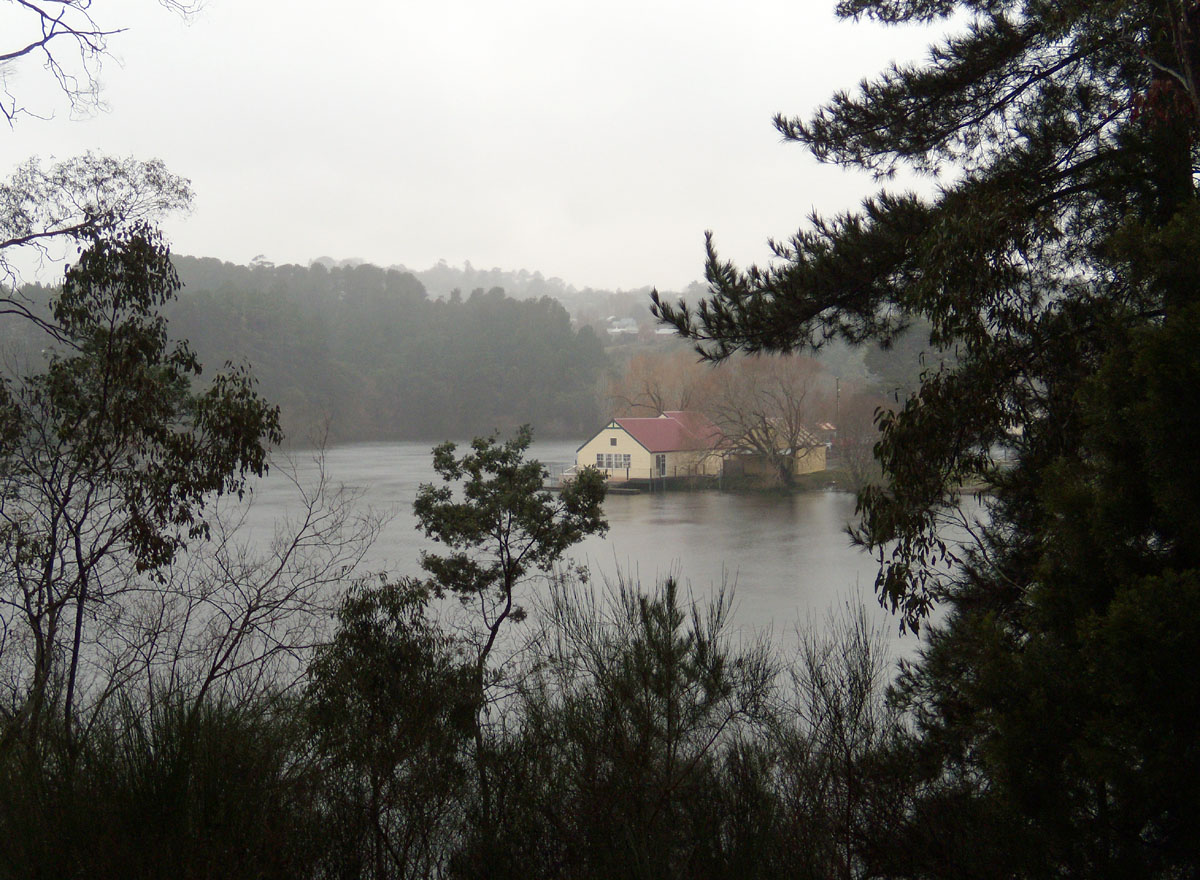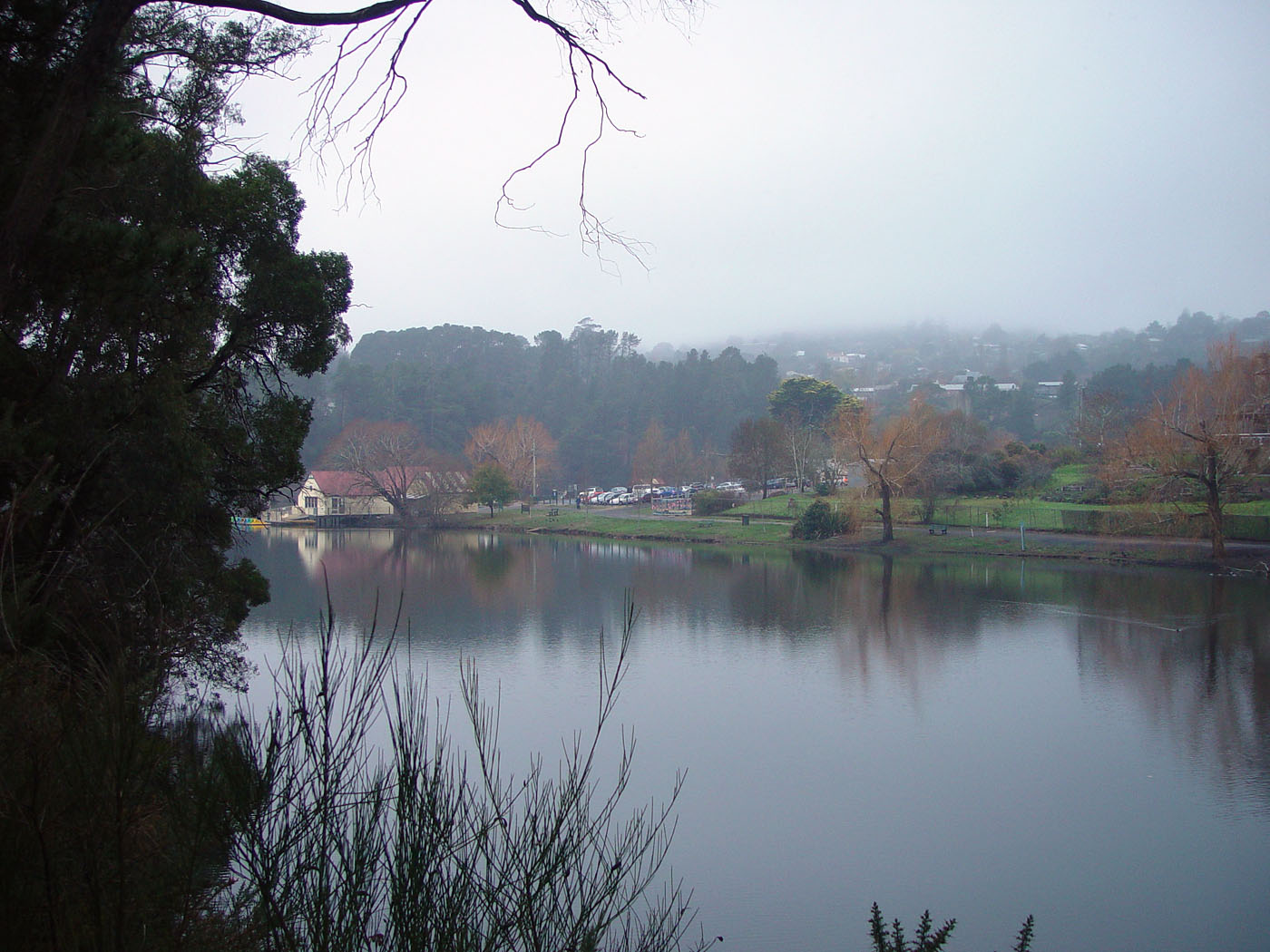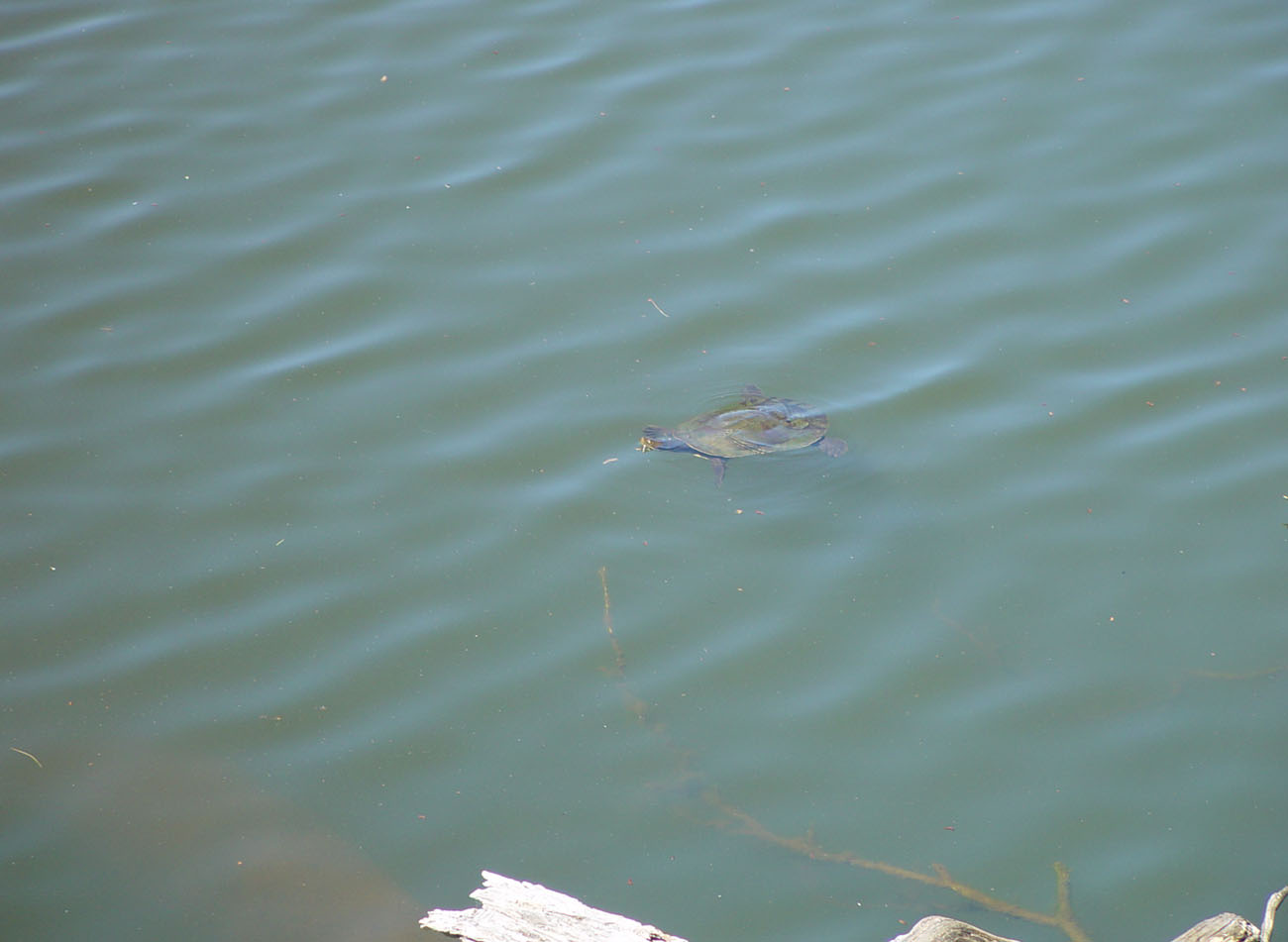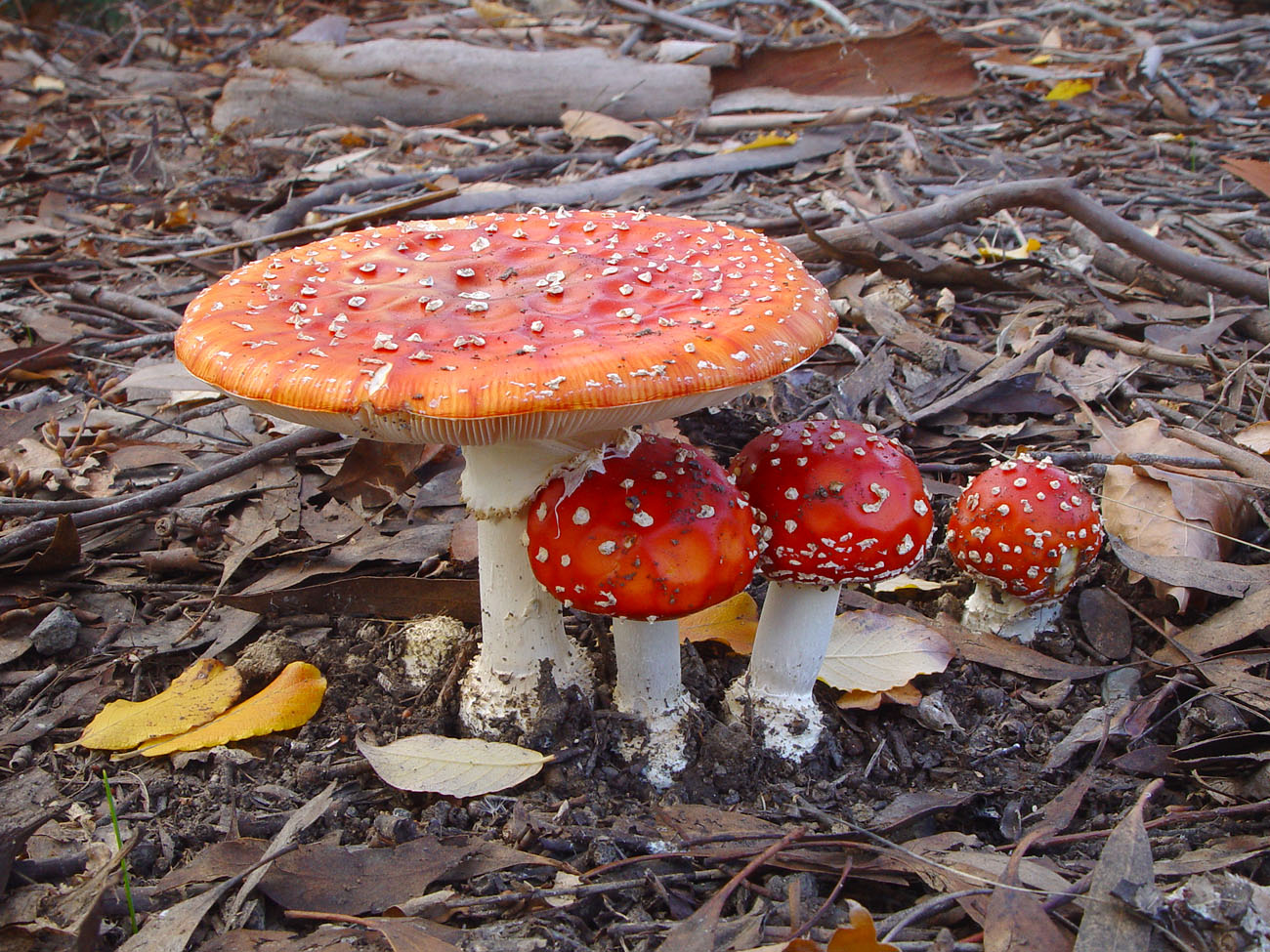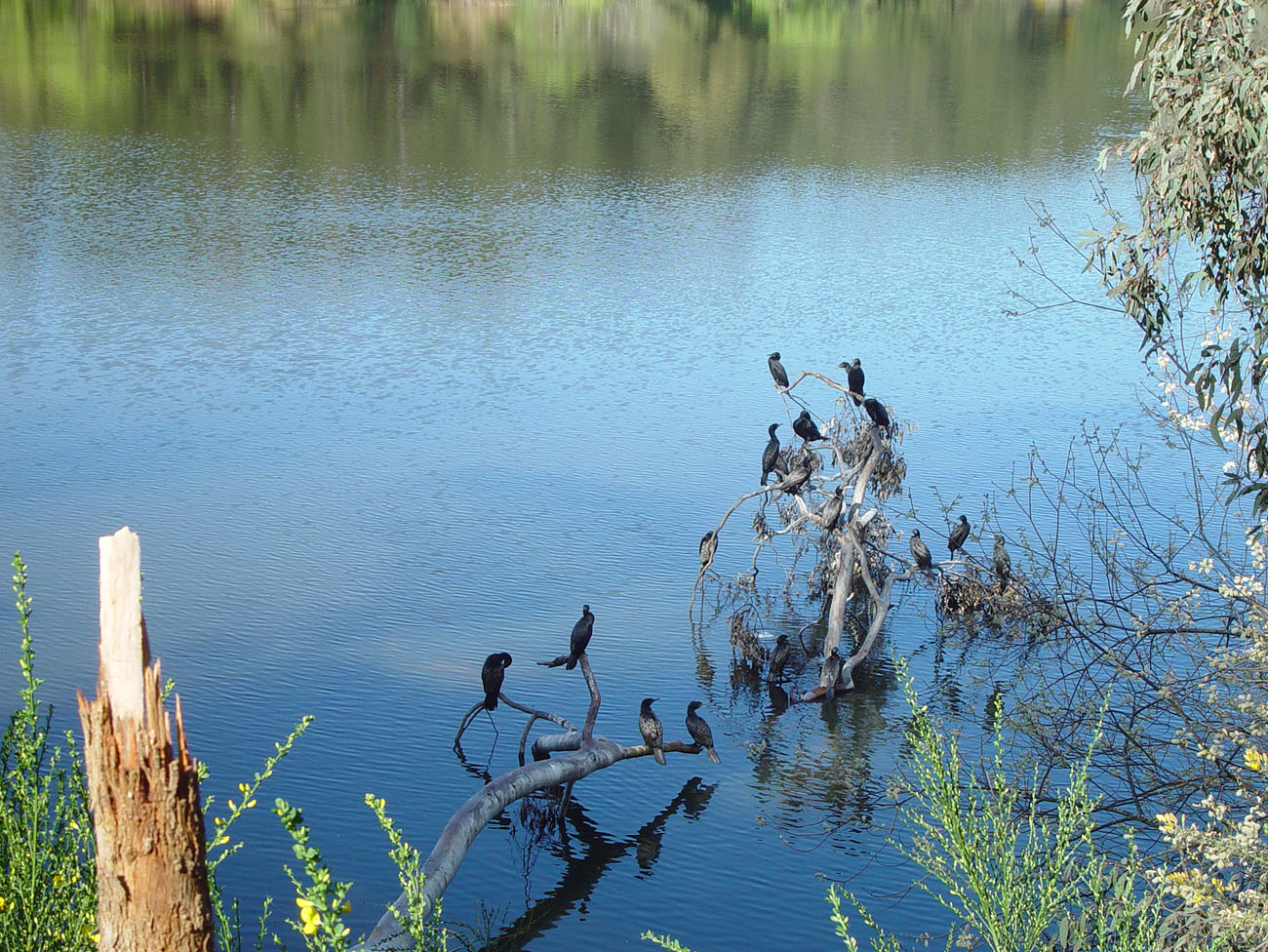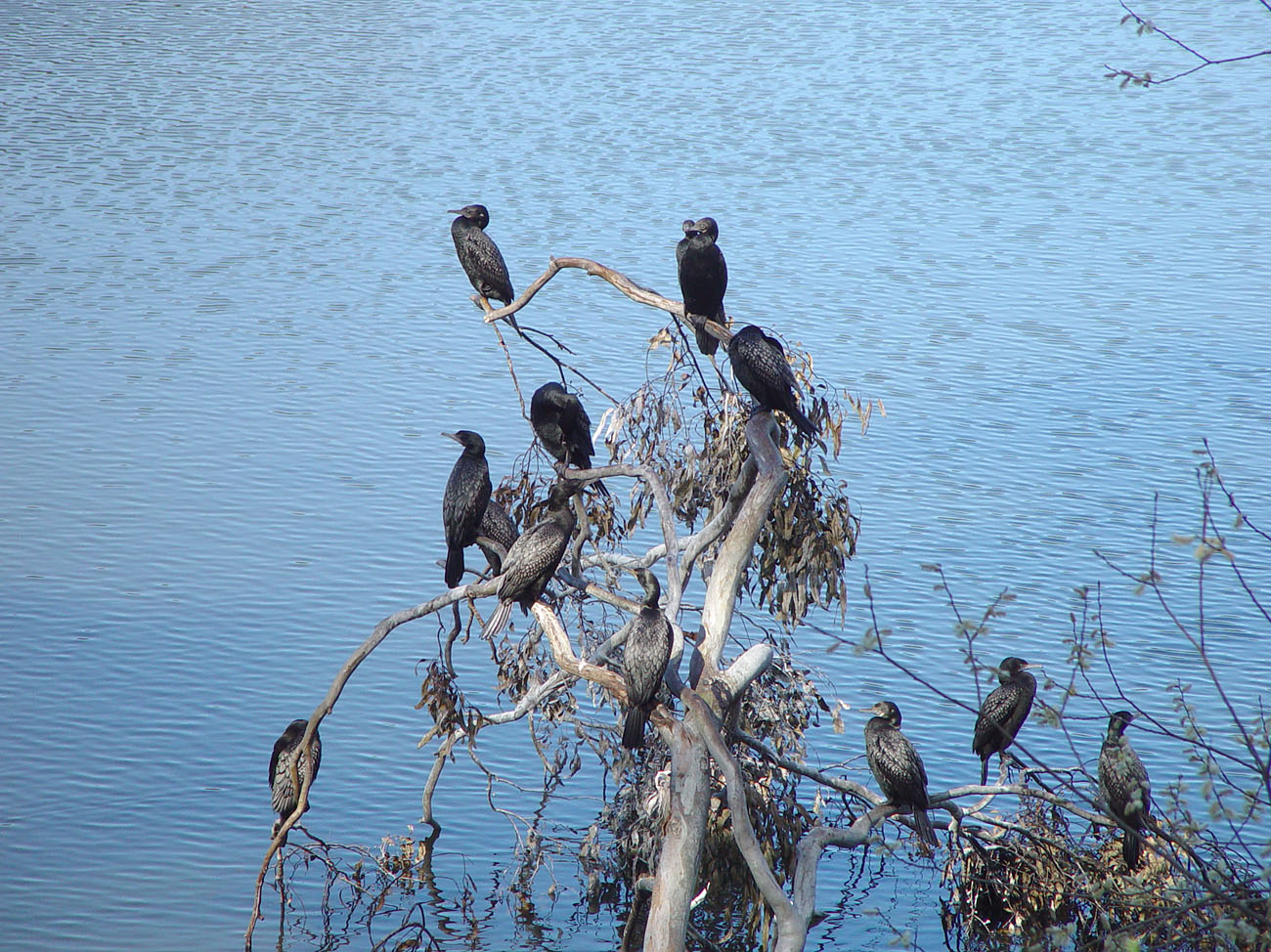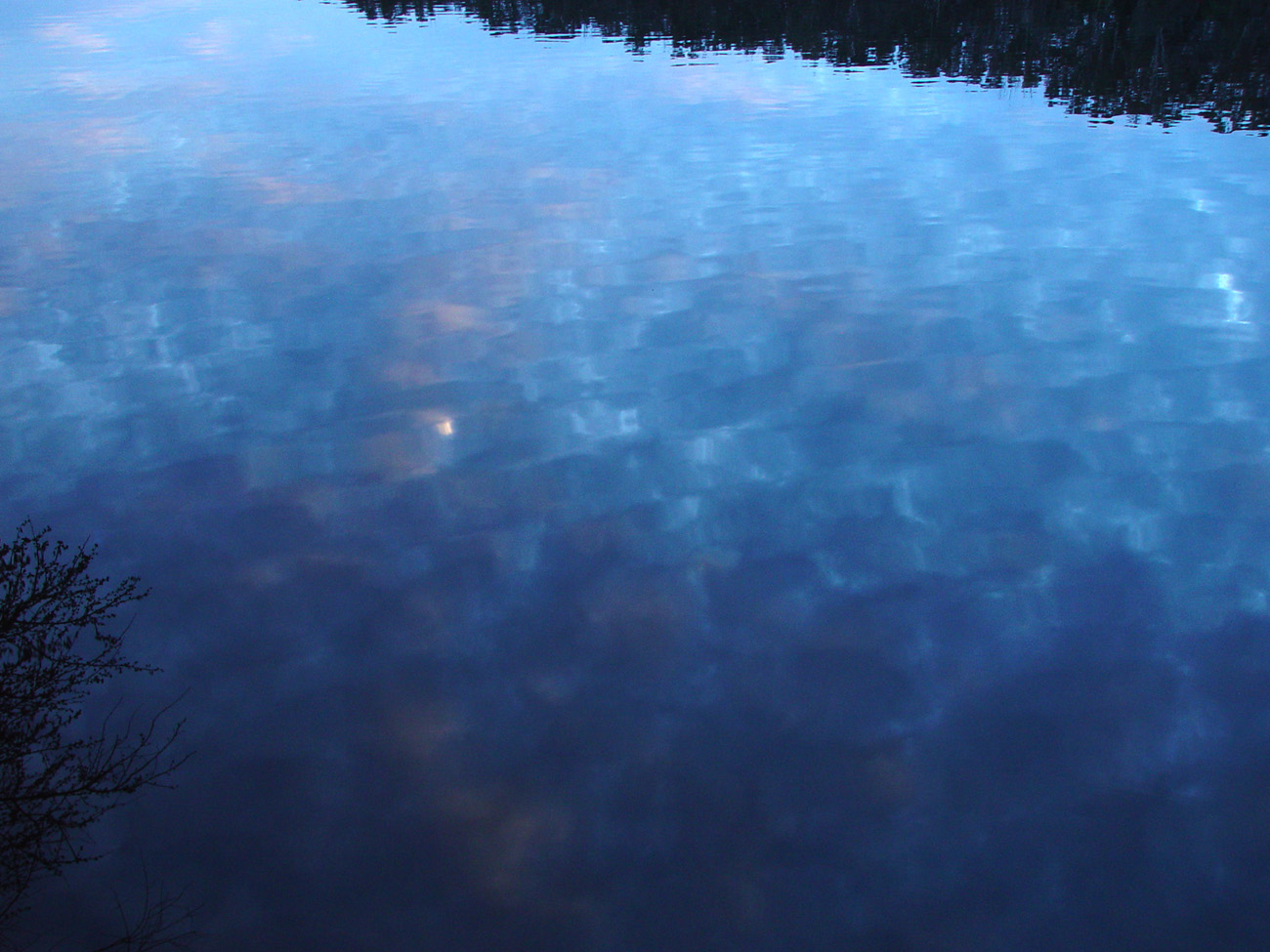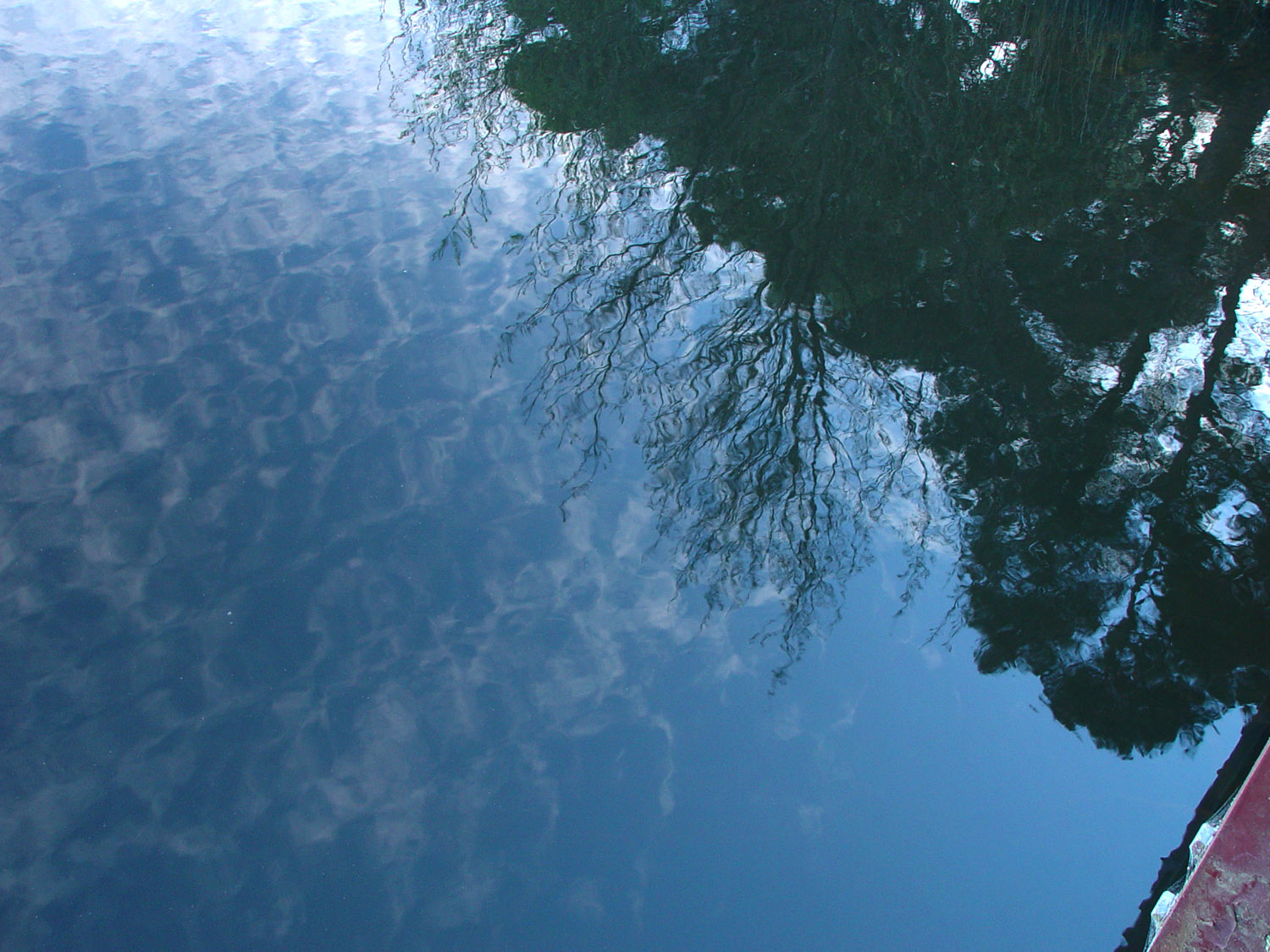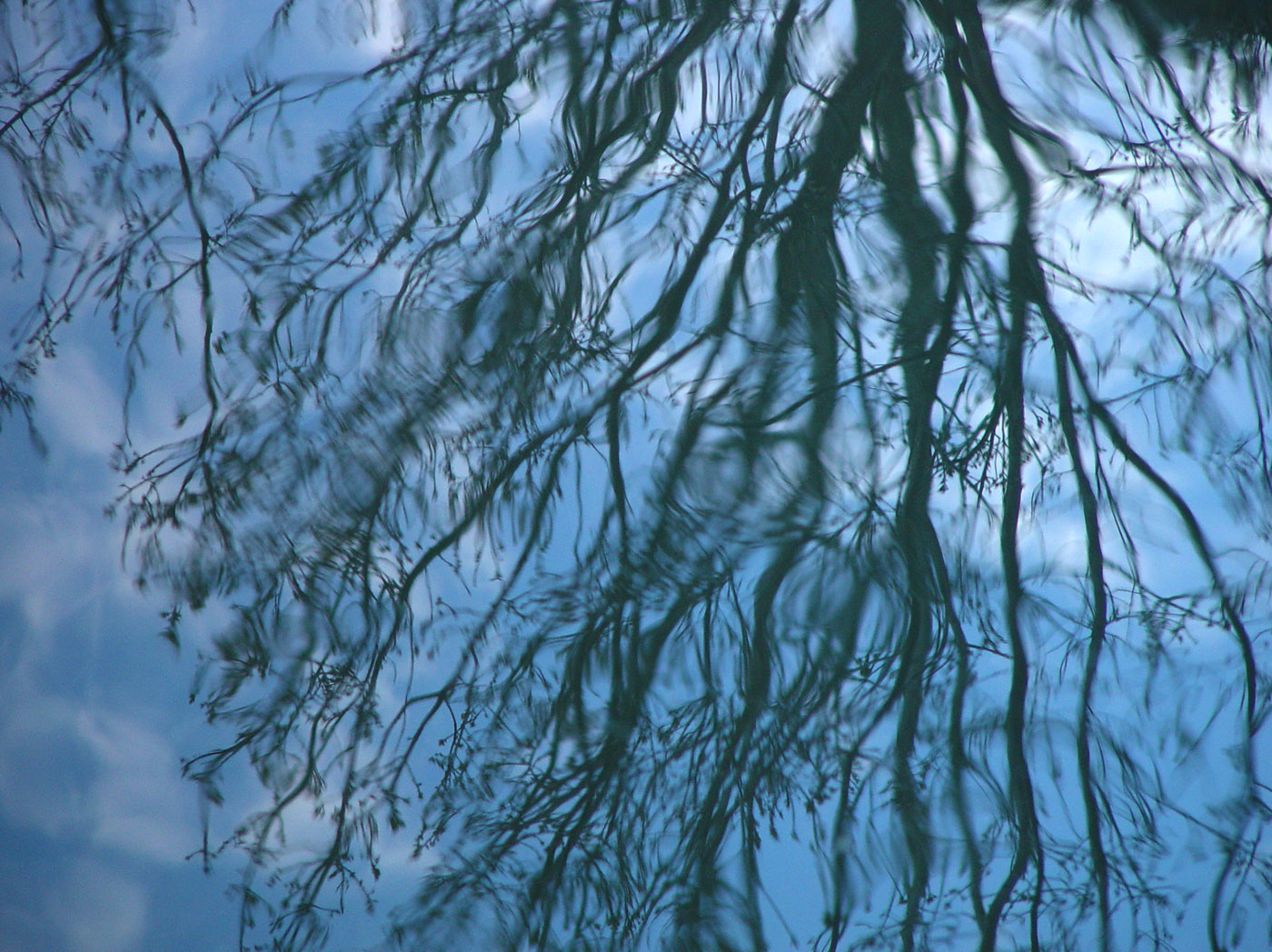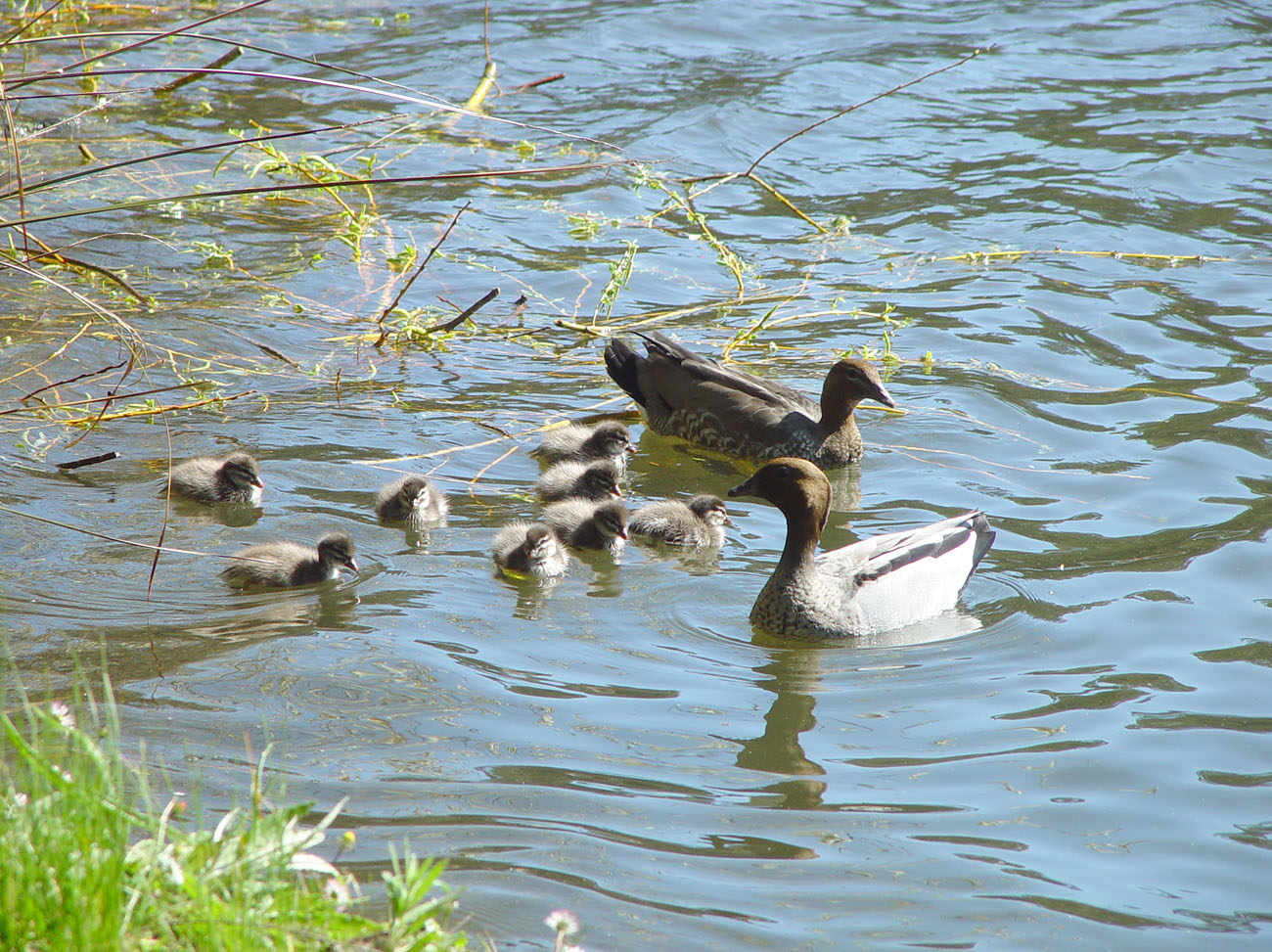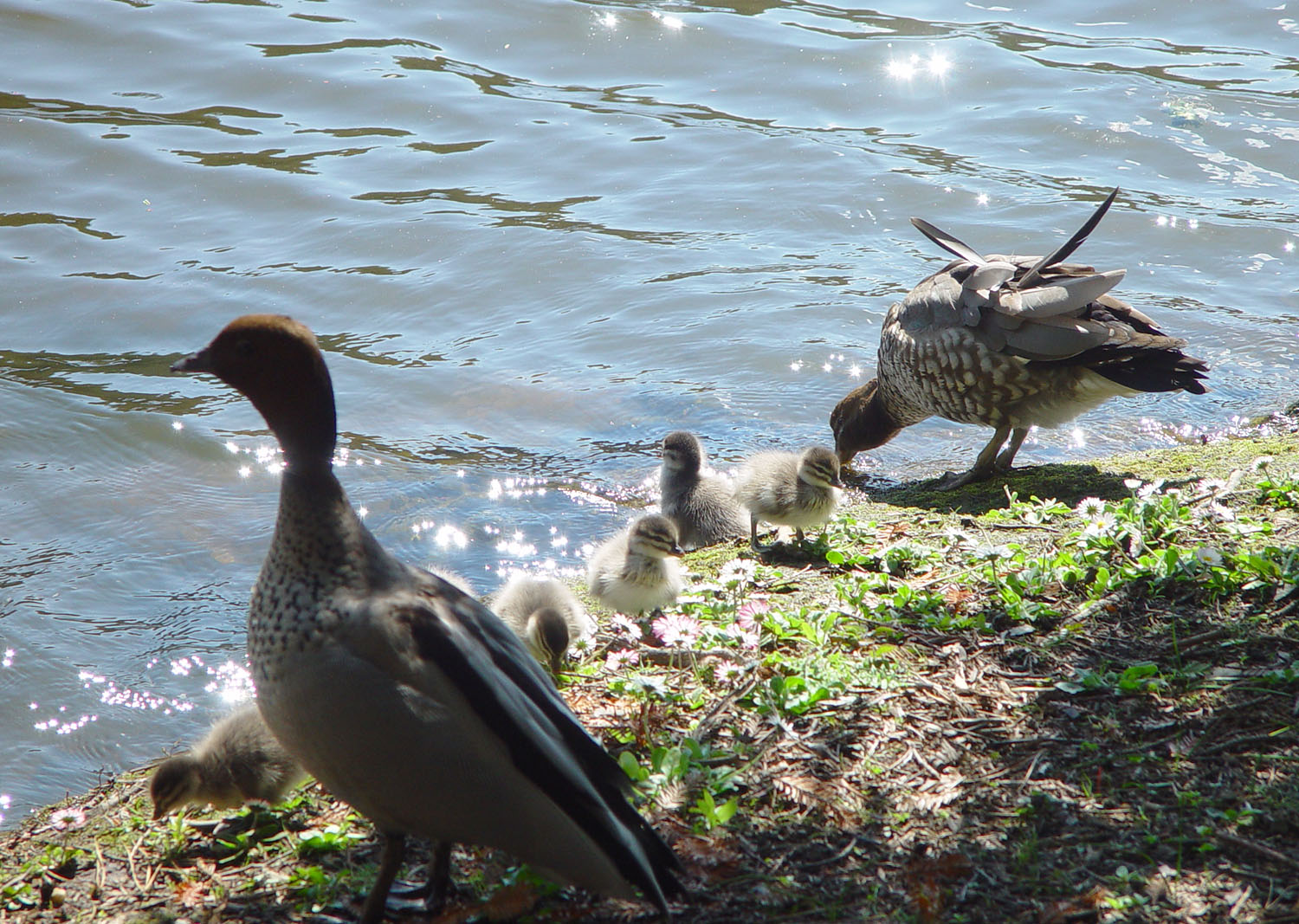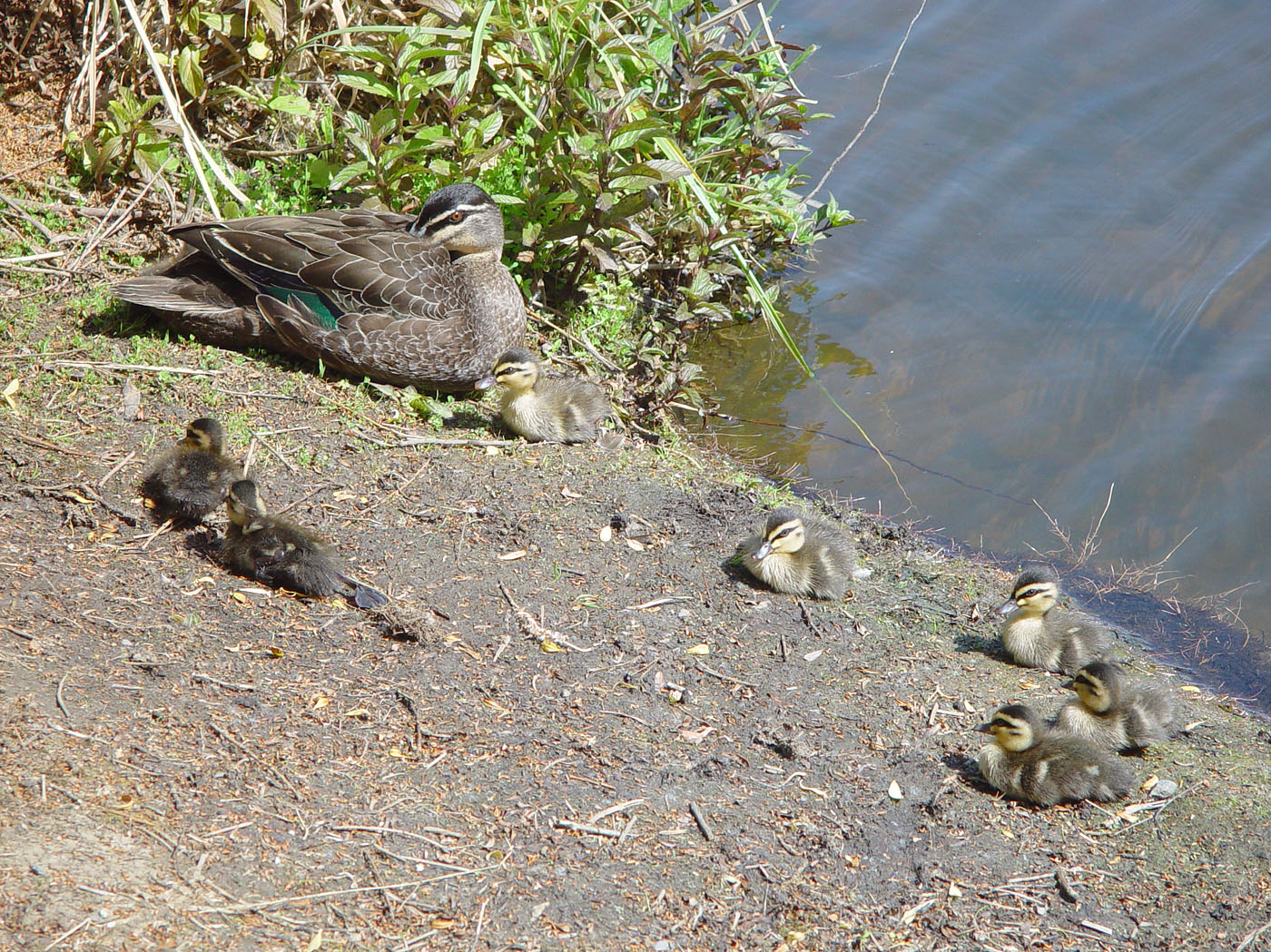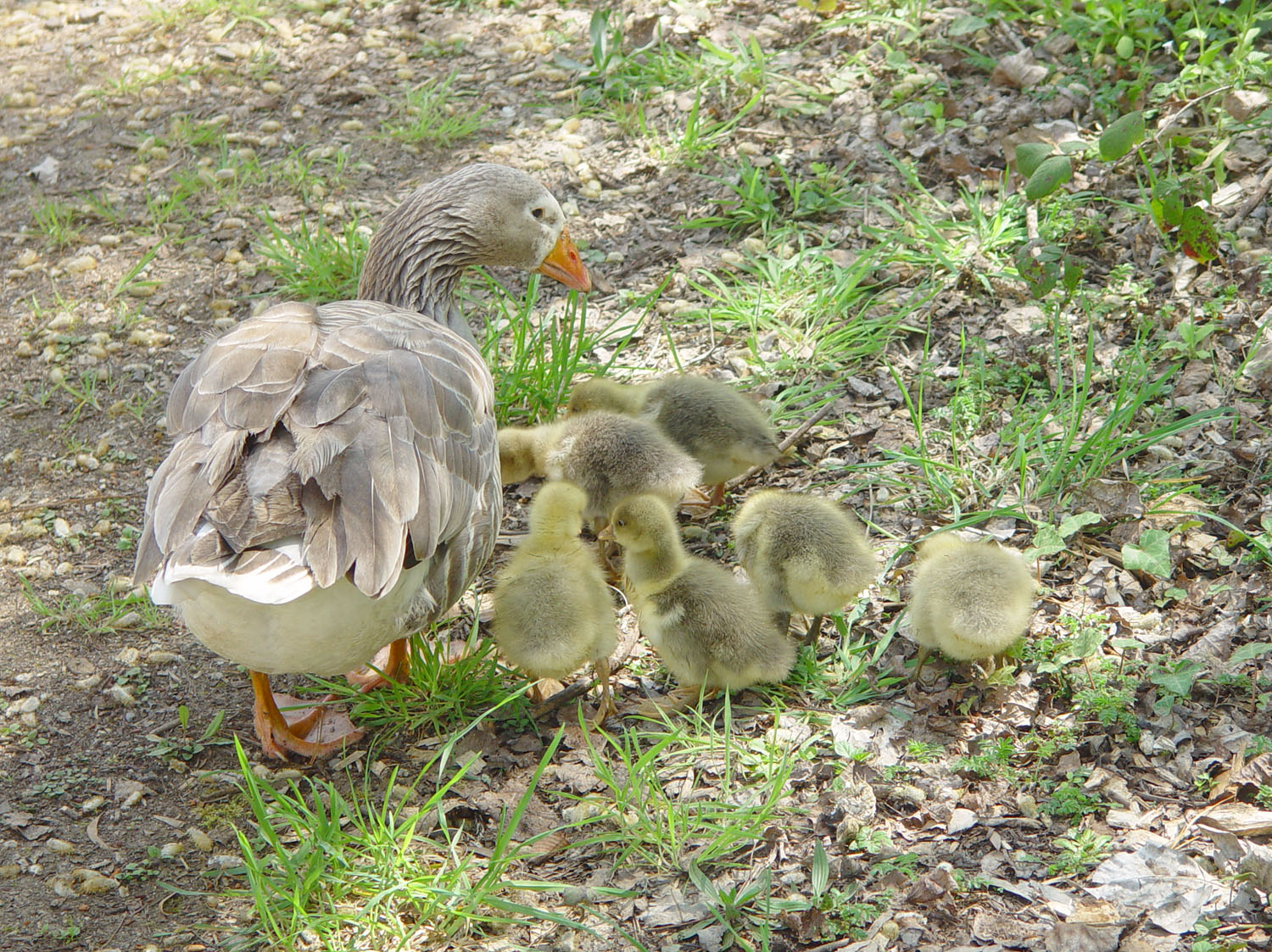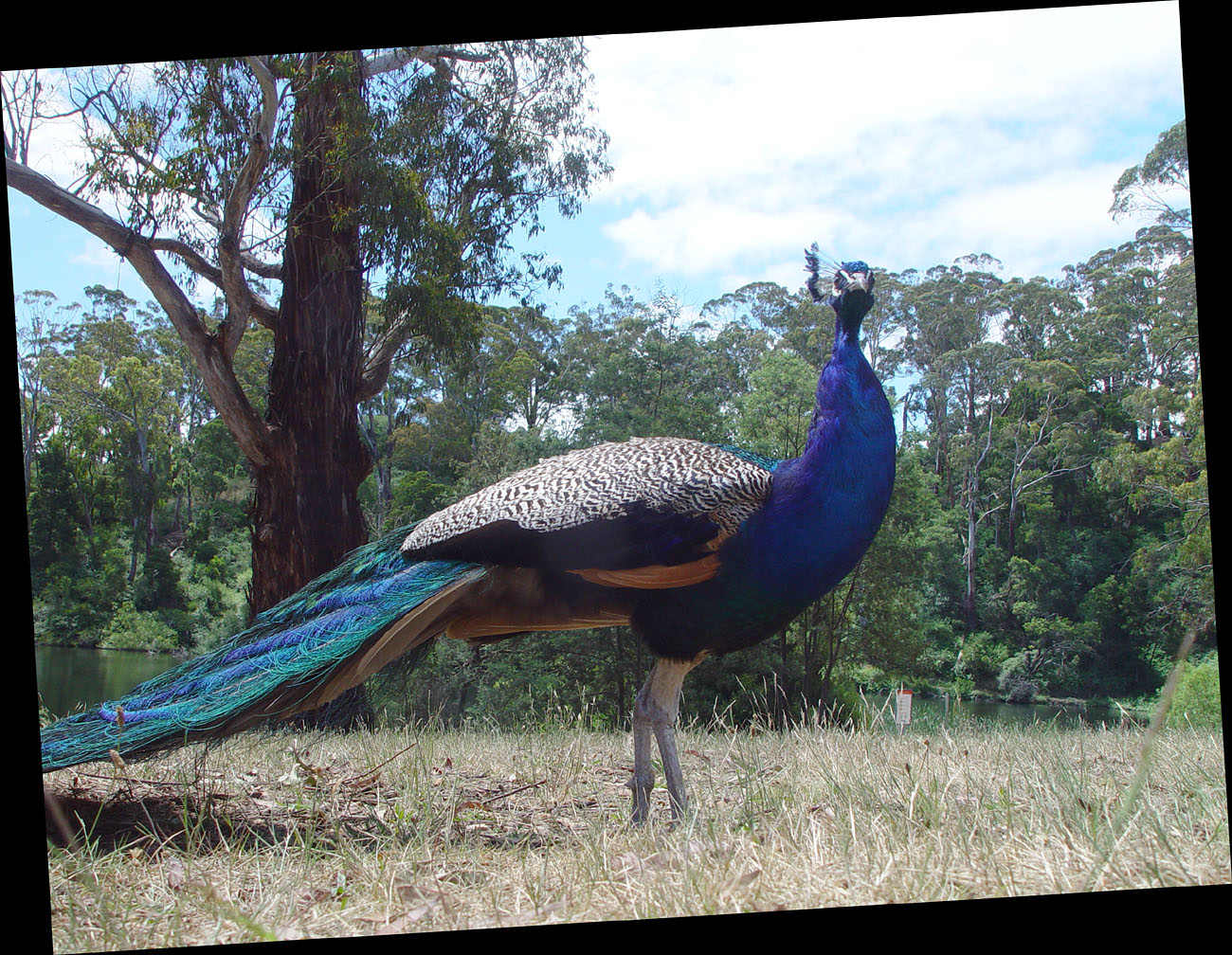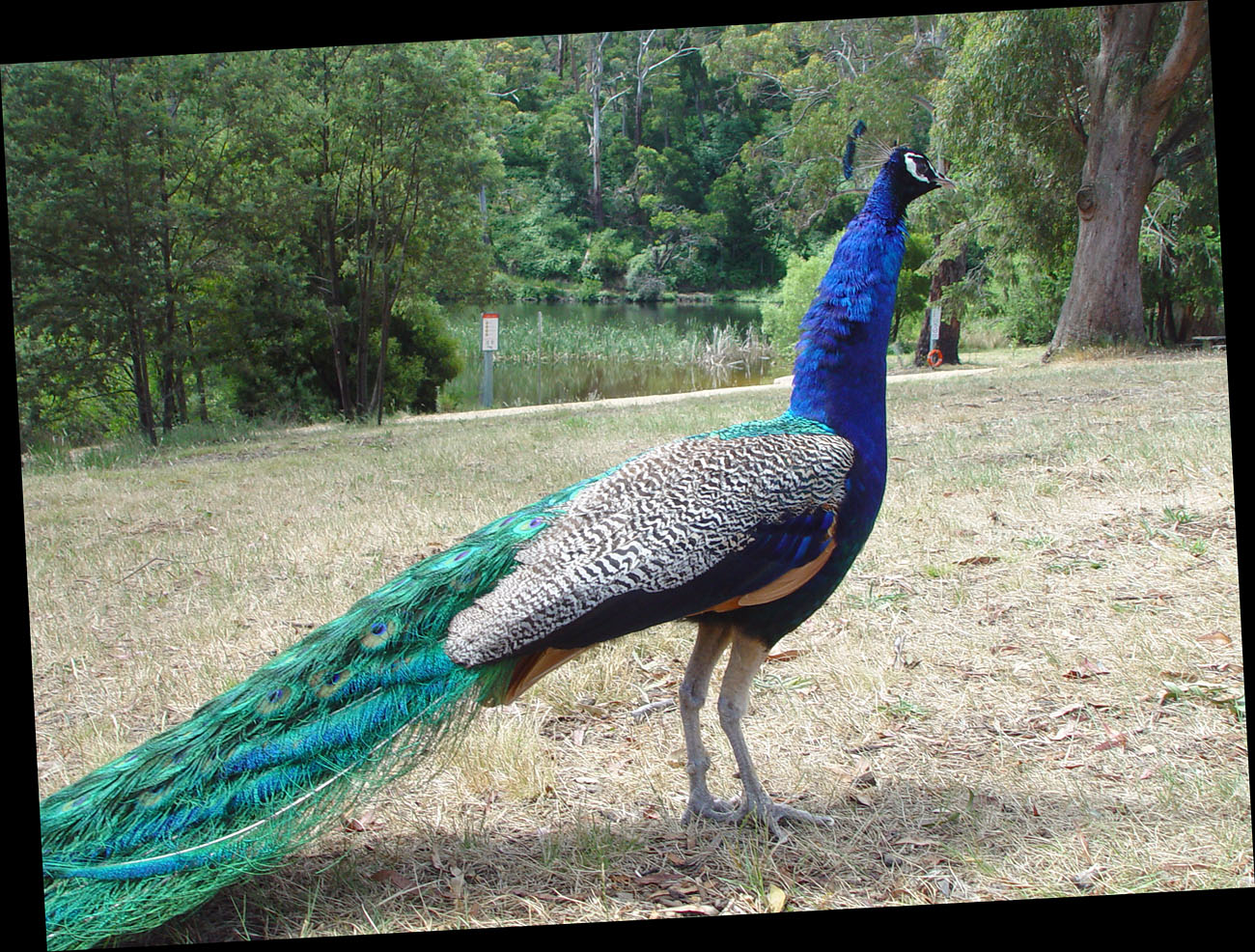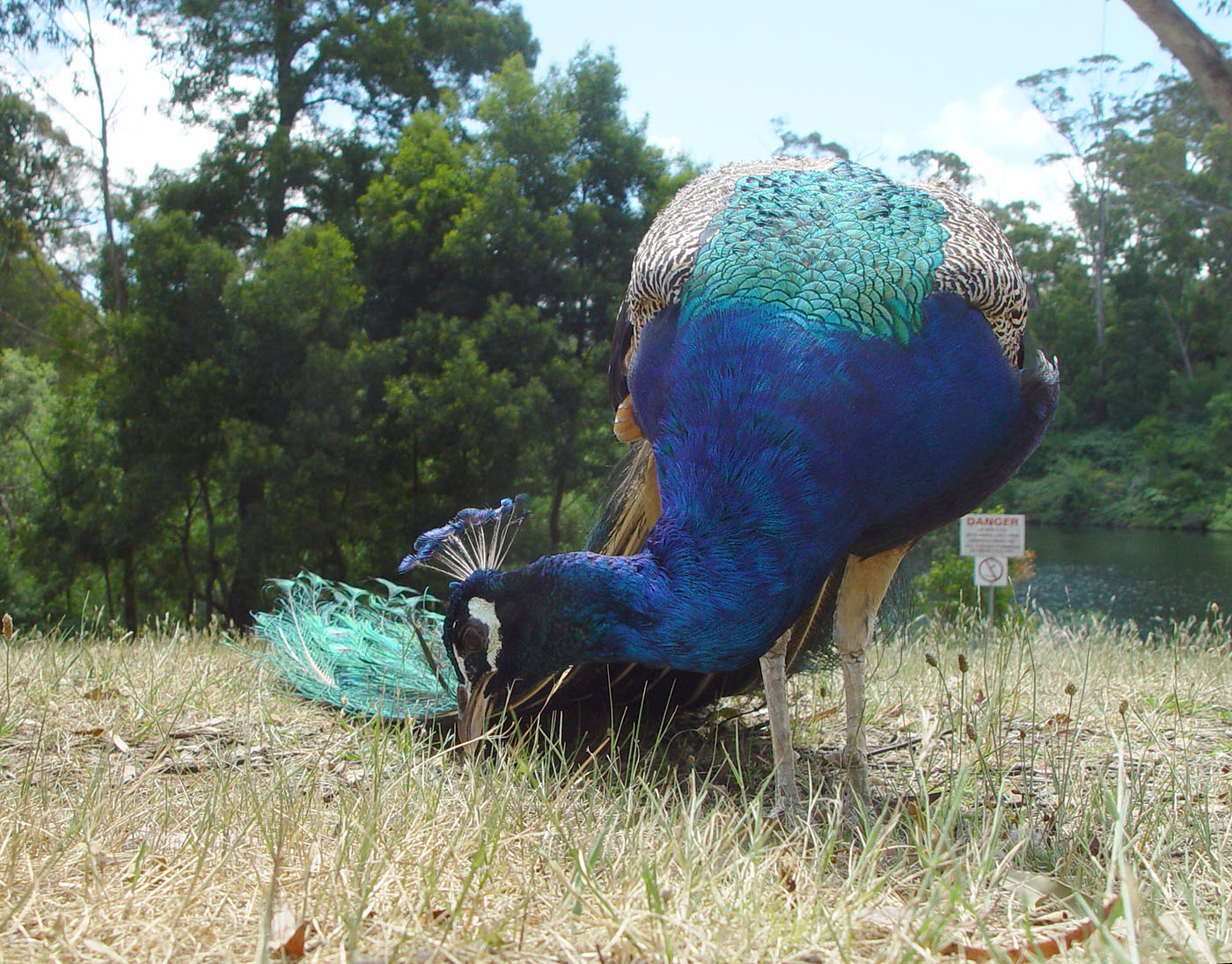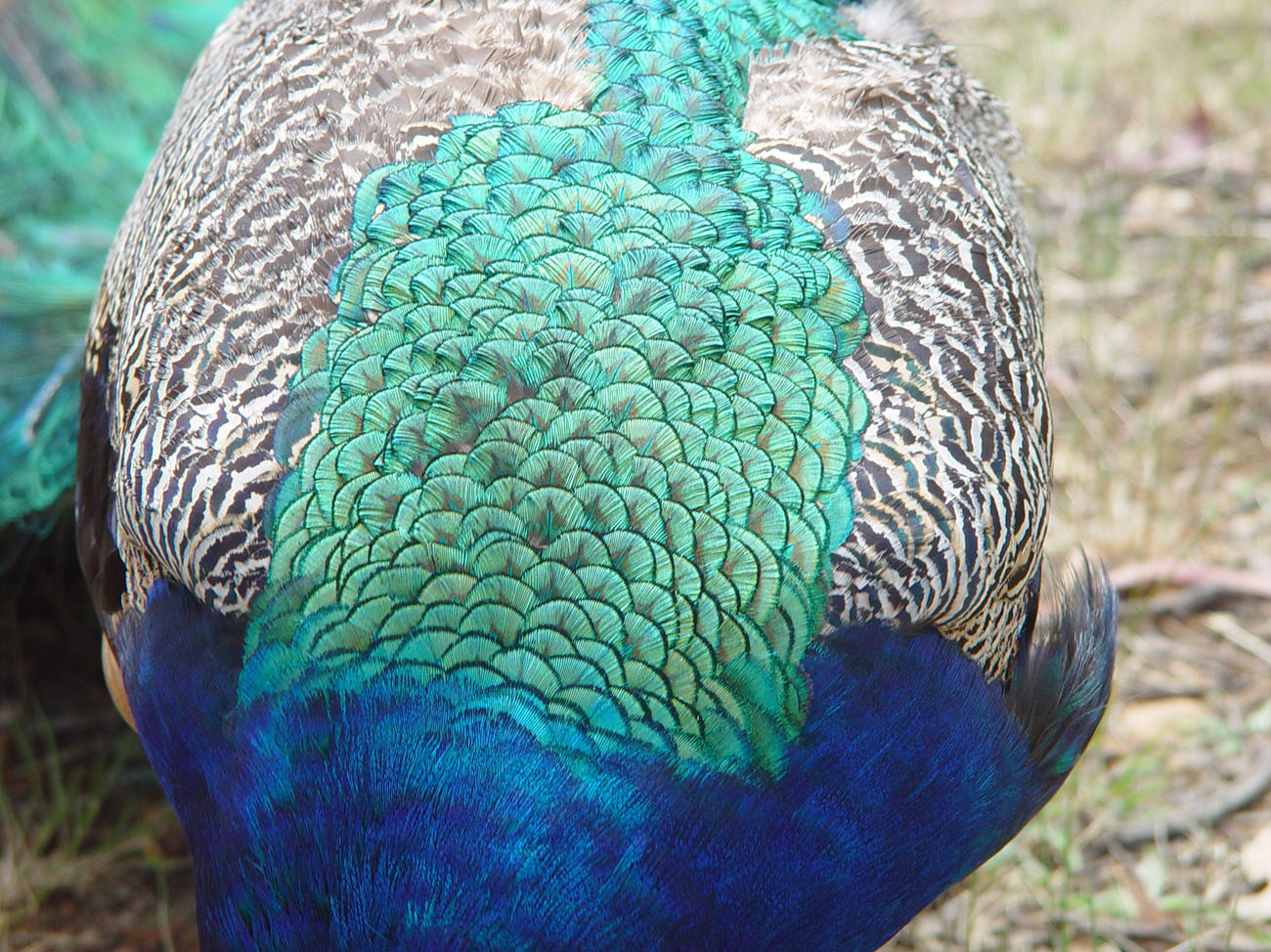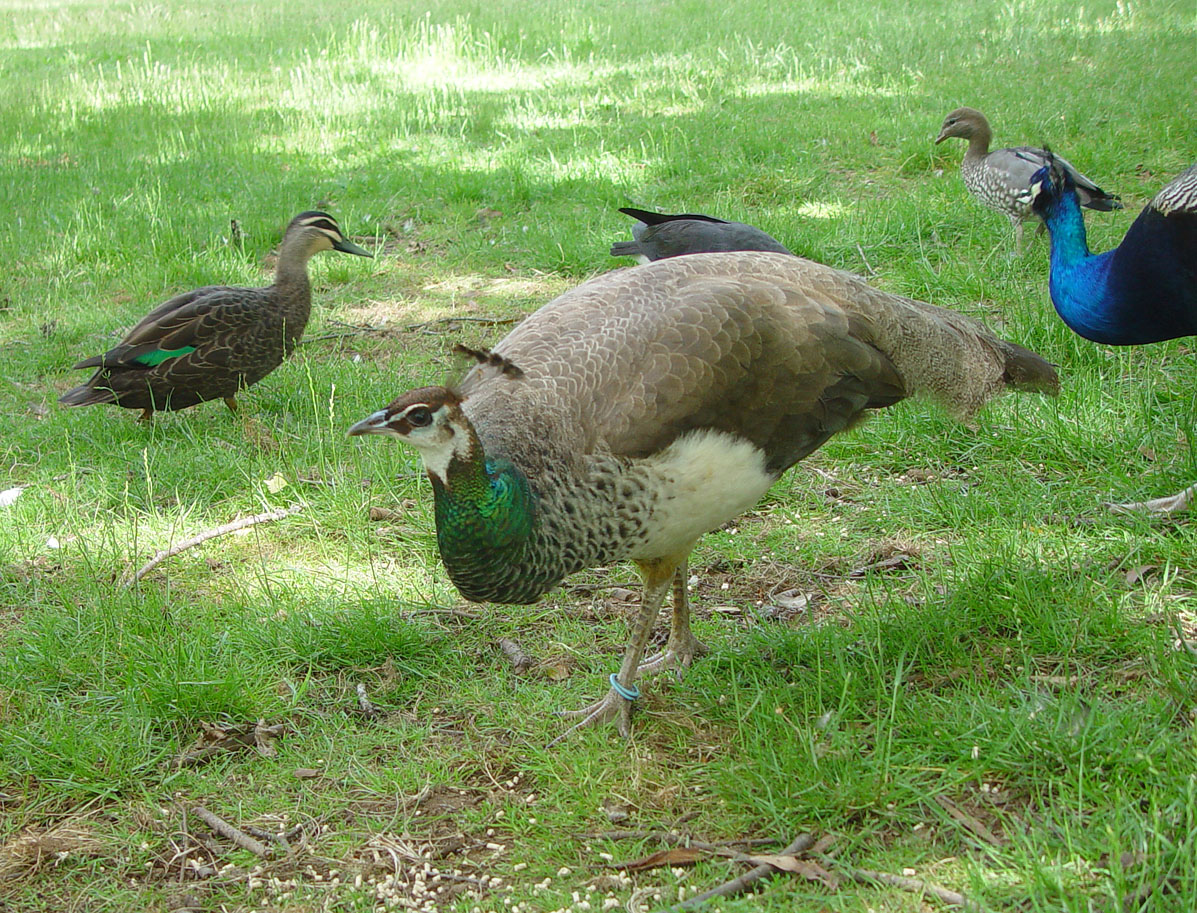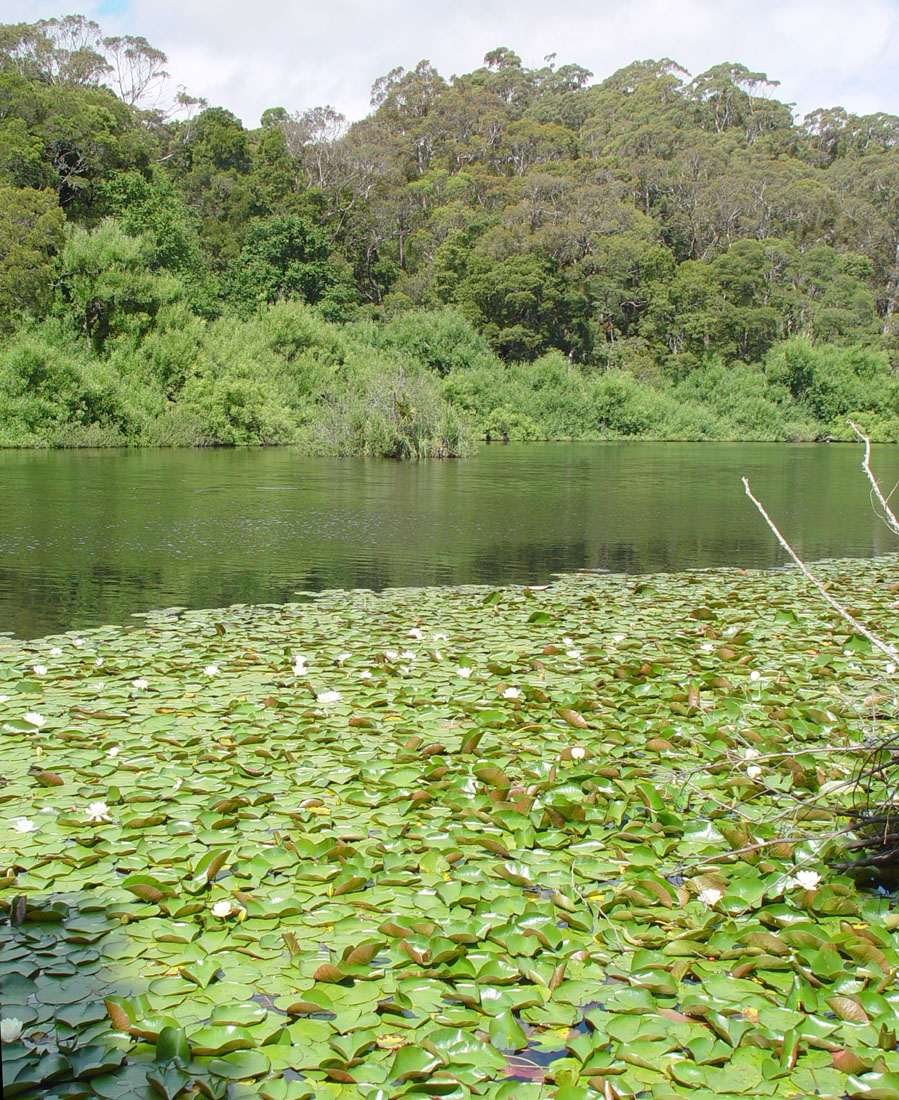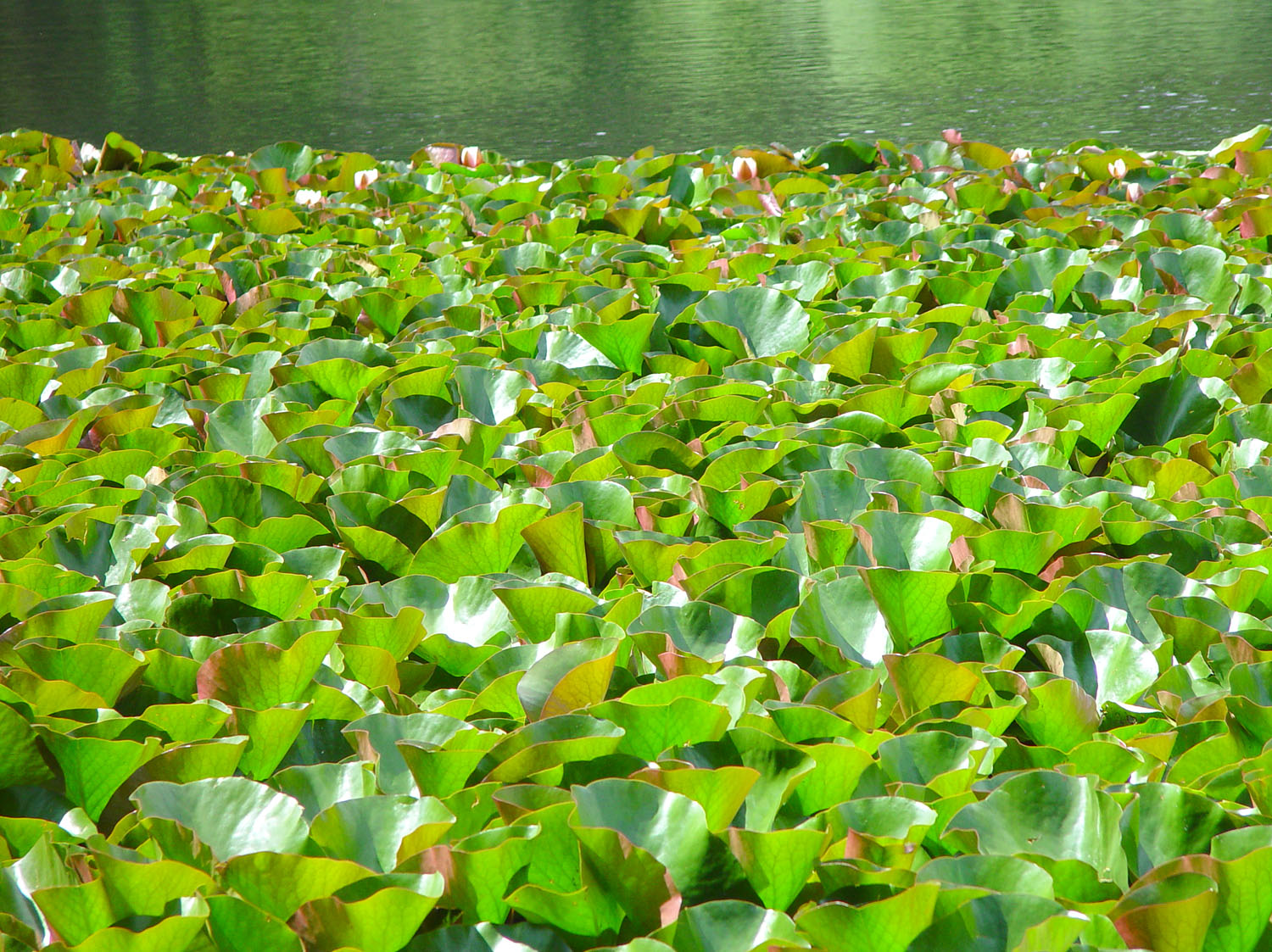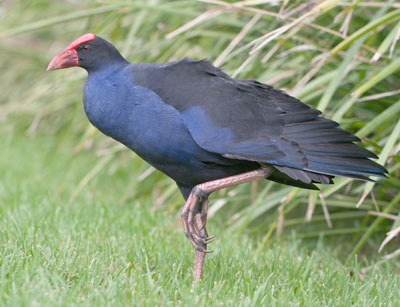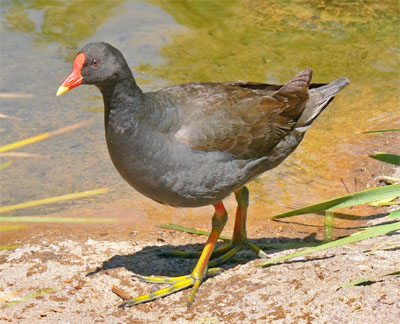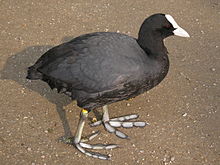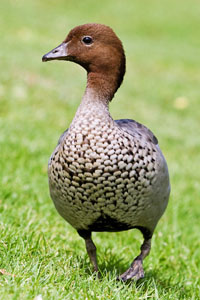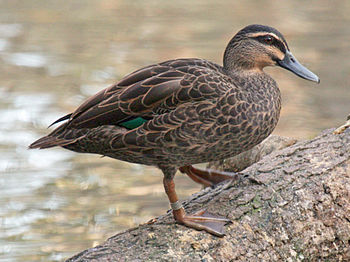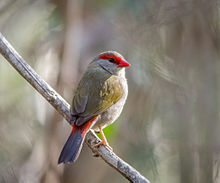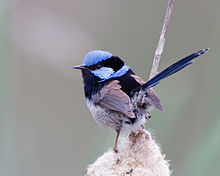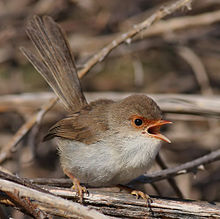June 2015, with the paddle boats
which are now moored there, and presumably available for hire, all year
round.
In May and June 2014 we saw quite a few rakali (rackalis?) -
Australian Native Water Rats:
They have quite large bodies, small heads, eyes and ears and a
long tail with a white tip.
We saw them at the north end of the lake and at the southernmost
part of Wombat Creek, to the south of the lake, just after it emerges
from underneath the Ballan Road from Shaw Dam.
Since then (to January 2016) we only seen one twice, in the lake
not far from the dam. In the second instance (perhaps September
2015), the rakali swam across the lake and landed next to the clump of
tall leaves which are visible just right of centre in the photo
above. It promptly scurried inside what was presumably its home.
In late 2015 this clump was beautified and thinned and we can't
imagine any self-respecting rakali residing there any more.
Rakali are widespread in Papua New
Guinea, much of eastern Australia, Tasmania and in some coastal parts
of the Northern Territory and Western Australia. They are proper
rodents, not marsupials, and share a similar ecological niche with the
platypus. They sometimes live in the same burrows, but not at the same
time. The Australian Platypus Conservatory takes an interest in
rakalis and has a page on their site http://www.platypus.asn.au for
reporting rakali sightings, which we did.
We think these are Little Black
Cormorants: https://en.wikipedia.org/wiki/Little_black_cormorant
otherwise known as a "little black shag". They seem to be present
all year round.
There are also occasionally some Darters https://en.wikipedia.org/wiki/Darter
also known as "snake birds" since their feathers are not water
resistant, which helps them stay submerged when hunting fish.
According to the Wikipedia article (subsection):
These birds
are foot-propelled divers which quietly stalk and ambush their prey;
then they use their sharply pointed bill to impale the food
animal. They do not dive deep but make use of their low buoyancy
made possible by wettable plumage, small air sacs and denser
bones. On the underside of the cervical vertebrae 5-7 is a keel,
which allows for muscles to attach to form a hinge-like mechanism that
can project the neck, head and bill forward like a throwing
spear. After they have stabbed the prey, they return to the
surface where they toss their food into the air and catch it again, so
that they can swallow it head-first. Like cormorants, they have a
vestigial preen gland and their plumage gets wet during diving.
To dry their feathers after diving, darters move to a safe location and
spread their wings.
They swim with just their heads above the water, and can be seen drying
out their wings, which we think the cormorants sometimes also do.
At the end of this page #birds is a guide to some
of the birds commonly seen at Daylesford Lake.
